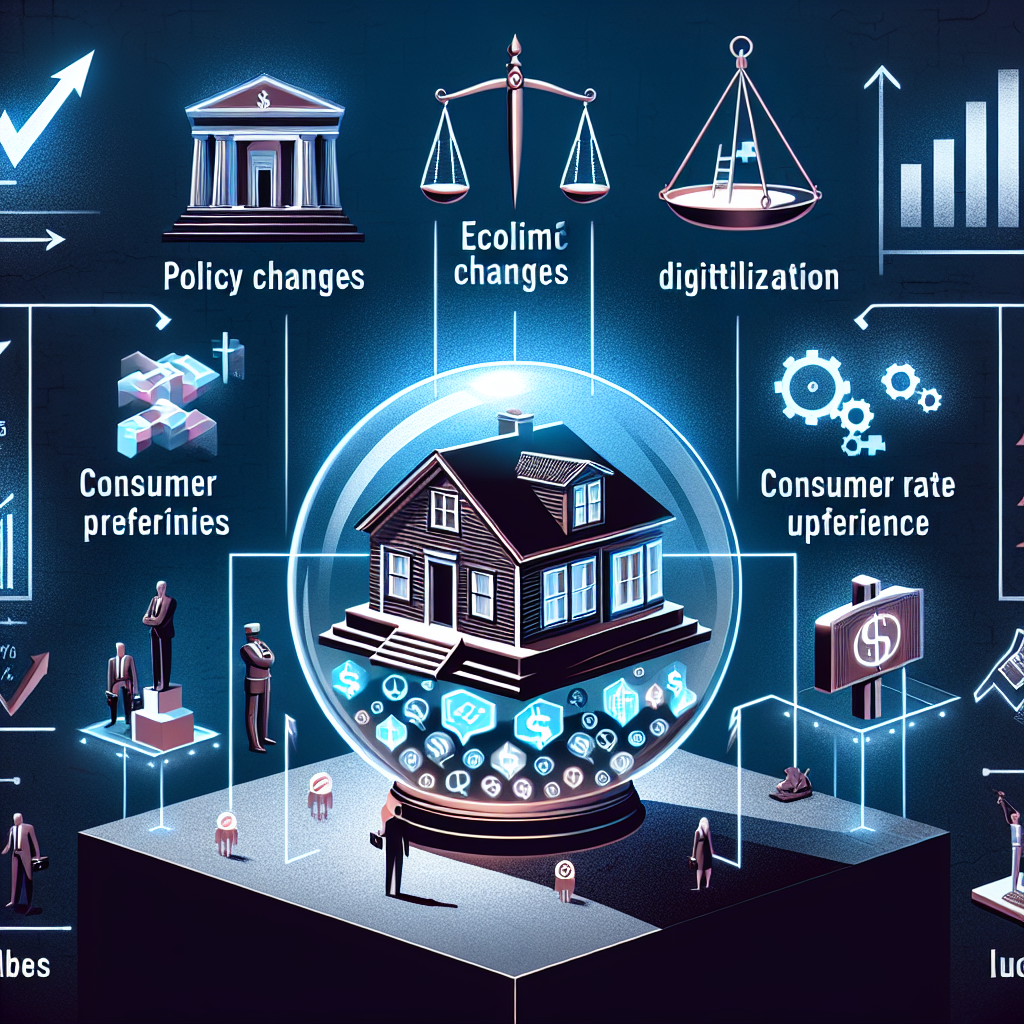-
 The Latest Trend in Mortgage Originating: Leveraging Digital Platforms for Enhanced Efficiency
The Latest Trend in Mortgage Originating: Leveraging Digital Platforms for Enhanced Efficiency Discover how digital platforms are transforming mortgage originating processes, enhancing efficiency, reducing processing times, and personalizing customer experiences.
Discover how digital platforms are transforming mortgage originating processes, enhancing efficiency, reducing processing times, and personalizing customer experiences.
Fannie Foresees Slower GDP Growth in 2019
- Friday, 14 December 2018
- Lending

Full-year 2019 real gross domestic products growth is predicted to slow to 2.3 percent, down from 2018's projected 3.1 percent, due to the waning impact of the Budget Reconciliation Act, a widening trade deficit, and moderating business investment growth, according to the Economic and Strategic Research Group at Fannie Mae.
[caption id="attachment_7581" align="alignleft" width="150"] Fannie's Duncan is calling for a slowing of GDP growth next year.[/caption]
Fannie's Duncan is calling for a slowing of GDP growth next year.[/caption]
"We expect full-year 2018 economic growth to come in at 3.1 percent, an expansion high, before slowing markedly to 2.3 percent in 2019 and 1.6 percent in 2020," said Fannie Mae Chief Economist Doug Duncan. "Fading fiscal policy, worsening net exports, and moderating business investment all contribute to our projection that GDP growth will begin to slow in 2019."
Consumer spending should continue to be the largest positive contributor to headline growth amid consumer confidence that remains near an expansion best. However, business fixed investment growth, a critical driver of the current expansion, slowed significantly in the third quarter and may be further constrained in the near term by higher tariffs, trade uncertainty, and rising interest rates and input costs.
The most notable downside risks to the forecast include the ongoing trade tensions between the U.S. and China as well as stock market volatility, both of which have the potential to materially impact consumer and business spending. Barring accelerating inflation, Fannie expects both mortgage rates and home sales to stabilize in the new year as the economy slows. Purchase mortgage originations should climb, but a more substantial decline in refinances is expected to result in a small drop in total origination volumes.
“If mortgage rates trend sideways next year, as we anticipate, and home price appreciation continues to moderate, improving affordability should breathe some life into the housing market,” said Duncan. “We also expect residential fixed investment to resume a positive growth trajectory amid continued rising housing starts and stabilizing home sales. However, affordability is likely to remain an industry concern, particularly among first-time homebuyers."
The labor market continues to be one of the economy's high points, and with inflation hovering around the Fed's 2.0-percent target, Duncan anticipates the Fed will hike rates once more in December and two more times in 2019, despite rising market expectations of fewer hikes amid stock market volatility.
Read more...MBA: New Home Purchases Dropped 11% in November
- Thursday, 13 December 2018
- Lending

The Mortgage Bankers Association Builder Application Survey data shows mortgage applications for new home purchases decreased 11 percent in November compared with the same time period a year ago. Compared to October 2018, applications declined by 14 percent. This change does not include any adjustment for typical seasonal patterns.
[caption id="attachment_8412" align="alignleft" width="144"] MBA's Kan: Economic uncertainty might have been a factor in home sales performance.[/caption]
MBA's Kan: Economic uncertainty might have been a factor in home sales performance.[/caption]
“By our estimates, new home sales fell almost 7 percent in November, and were about 5 percent lower than a year ago,” said Joel Kan, MBA’s associate vice president of economic and industry forecasting. “Despite a still-strong job market and recent declines in mortgage rates, affordability challenges continue to hold back sales activity, as wage growth still lags behind home-price growth. Additionally, recent stock market volatility and some economic uncertainty might have contributed to the pullback in home sales in November.”
MBA estimates new single-family home sales were running at a seasonally adjusted annual rate of 627,000 units in November, based on data from the Builder Application Survey. The new home sales estimate is derived using mortgage application information from the Builder Application Survey, as well as assumptions regarding market coverage and other factors.
The seasonally adjusted estimate for November is a decrease of 6.8 percent from the October pace of 673,000 units. On an unadjusted basis, MBA estimates that there were 45,000 new home sales in November 2018, a decrease of 15.1 percent from 53,000 new home sales in October.
By product type, conventional loans composed 69.7 percent of loan applications, Federal Housing Administration loans composed 17.3 percent, RHS/USDA loans composed 0.7 percent and Veteran Affairs loans composed 12.3 percent. The average loan size of new homes decreased from $331,732 in October to $326,037 in November.
MBA’s Builder Application Survey tracks application volume from mortgage subsidiaries of home builders across the country. Using this data, as well as data from other sources, MBA is able to provide an early estimate of new home sales volumes at the national, state, and metro level. This data also provides information regarding the types of loans used by new home buyers. Official new home sales estimates are conducted by the Census Bureau on a monthly basis. In that data, new home sales are recorded at a contract signing, which is typically coincident with the mortgage application.
Read more...
Texas Capital Launches Digital Mortgage Program
- Tuesday, 11 December 2018
- Lending

Texas Capital Bank has launched their eMortgages program, becoming one of the first banks in the U.S. to fully support digital mortgages. By providing financing for eMortgages, Texas Capital Bank aims to solve the liquidity issue for lenders, and bridge the financial gap required to help eMortgages take off.
"The team is proud to be at the forefront of the evolution of the mortgage industry," said Vince Ackerson, chief lending officer and president at Texas Capital Bank. "We recognize that the future is digital, so we strive to pave the way for our client's success by adopting new technologies early in their lifecycle. We are excited to be a part of this change."
Fully digital mortgages, or eMortgages, supply borrowers with a quick and convenient way to secure a mortgage by removing all paperwork from the process. These mortgages are evidenced by a promissory note that exists in electronic format, or eNote.
"In the long term, eMortgages hold the promise to help lenders gain operational efficiencies, realize cost savings and experience increased borrower satisfaction," said Jack Nunnery, president of mortgage finance. "Having a knowledgeable counterparty that can help remove some of the uncertainty can be essential to a mortgage lender's success as they embark on their own digital transformation."
Read more...Leaders on Leadership: Kristy Fercho of Flagstar Bank
- Monday, 10 December 2018
- Lending

Title: President of Mortgage
Company: Flagstar Bank
Number of Employees She Manages: 1,800
Mortgage Exec Since: 2001
Who Inspires Her: Her father, Willy Williams. In 1969, in the aftermath of the 1968 Mexico Olympics, a tumultuous era for Civil Rights, Dick Clausen, a forward-thinking athletic director at the University of Arizona, selected Williams, as head track coach. It was history in the making because he was the first African American head coach at a major university in the U.S.
On Entering the Mortgage Biz
On Sept. 11, 2001, Fercho was in New York City working in the human relations department of PepsiCo. That horrific experience led her to reconsider her life style, to find more balance between her workaholic, business focus and giving more back to society.
Fercho decided to consider making a career change.
And remembered, something she’d heard a Fannie Mae executive say at a conference she’d attended, “At our company, the mission of funding the American dream was as important as the job.”
That comment intrigued Fercho.
So, she began to identify companies she might like to work for, companies where the mission was as important as the job and compiled a short list of possibilities that included Walt Disney, The American National Red Cross, and of course, Fannie Mae.
Thirty days later, Oct. 11, she was hired to work in the human-resources department for multi-family at Fannie Mae.
Once at Fannie Mae, Fercho’s approach to her job was to become expert at her job and to understood what everyone else did as well. She worked to understand the mortgage business, reading everything she could get her hands on, often into the early morning hours.
As a result, she could make strategy and performance suggestions to executives in meeting--who she found were open to her advice and often implemented her suggestions. She became known within Fannie as someone that understood the business well, knew what would work or wouldn’t work--and was imbued with leadership qualities.
In 2005, Fannie Mae was forced to restate earnings, due to improprieties, which a regulator attributed to the corporate culture of the company. The culture had to be evaluated and changed, and Dan Mudd, the former CEO of the company, asked Fercho to look into it and make recommendations for improving the culture.
She would go on to hold other high-profile positions, including serving as senior vice president for customer delivery, responsible for the strategy and performance of single-family customers in the West, with an acquisition volume of over $300 billion, before joining Flagstar.
Leadership Keys Are Humility, Empathy
Fercho articulated some keys to strong, effective leadership. One key is humility, but more than that it’s a respect for the expertise and insights of her team. In her view, a leader has to put her team in a position to shine and to contribute. A leader can’t know everything, so she makes sure employees have a voice, are given an opportunity to be heard, and better-informed decisions can be made. To that end, Fercho has no problem saying, “I don’t know this that well” and ask the team for help. Or she’ll explain her thinking on a topic and ask them “to step up and challenge my assumptions.”
Second, leadership requires empathy. Place yourself in shoes of employees and consumers. Challenge how you fit and bring in solutions that solve real problems and meet the needs of consumers. To know if the approach is working informally ask questions of borrowers, or take a formal survey.
And then listen to their responses.
Leadership requires creating vision and then teaching people to use their talents, skills and abilities. Leadership is not about you, but about others; always make it about other people. Let people use their talent and abilities to work to an end. You get a better outcome that way. It’s about potential. In contrast, management is more about the specifics of a task at hand.
Read more...







